Magnolia trees are one of the most popular decorative trees and shrubs in the western world.
We imagine this is largely due to the large, spring-flowering blooms which are stunning to behold and smell heavenly.
Magnolia flowers come in many hues and pigment combinations, but their light and fresh scent is arguably the best thing about magnolia plants. There is nothing on earth that smells exactly like a newly-opened magnolia flower.
While they are a common enough sight in gardens in America, some people may not know where to begin when it comes to choosing a magnolia tree.
Which are the best varieties and where can they be grown? We answer your magnolia-related questions and show you some of the most beautiful and fragrant magnolia varieties available in North America.
What Are Magnolia Trees?
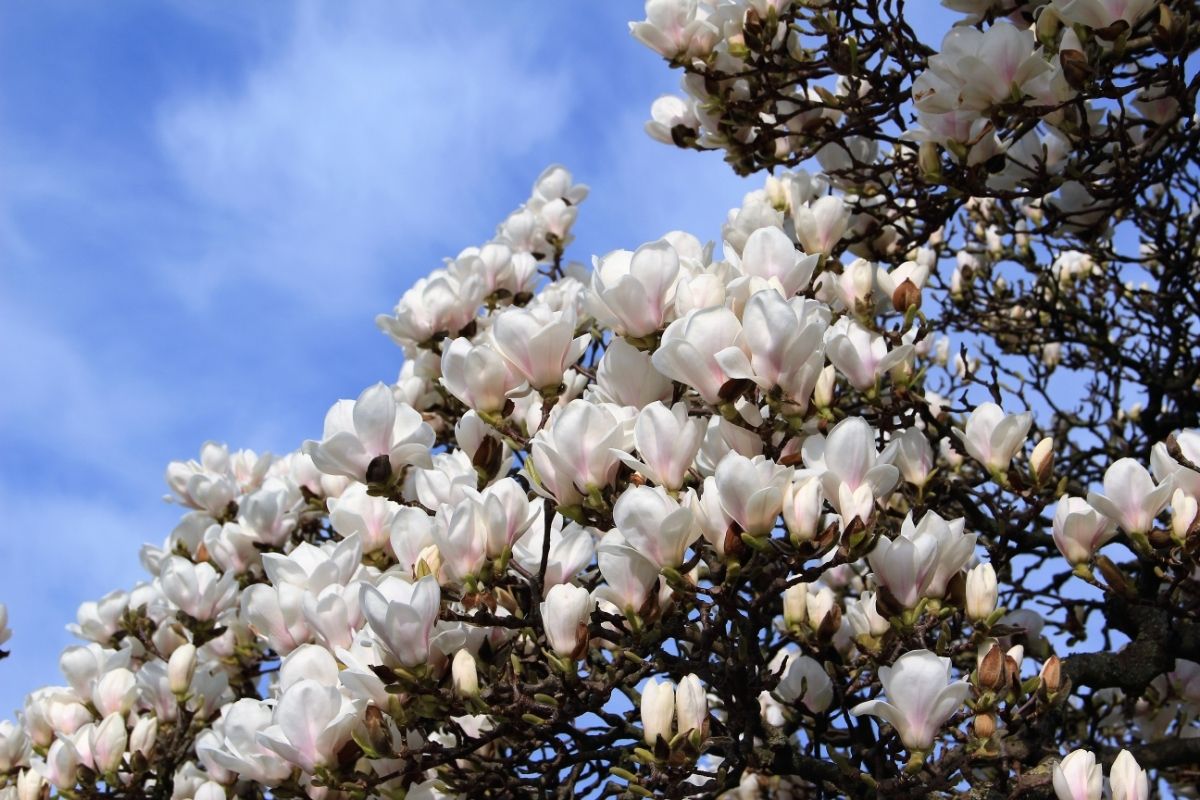
Magnolia’s are decorative trees that come in deciduous or evergreen tree varieties. Deciduous tree varieties are typified by the fact that their large lily-shaped blossoms open before their leaves are open in the early spring.
Evergreen magnolias usually bloom between spring and summer, but you may also see some flowers later in the fall from that year’s new growth.
Magnolia plant extracts have been found in fossils from millions of years ago, which causes botanists some confusion about where magnolia trees originated from, but these days they can be found on most continents and are common in Europe, Asia, and the Americas.
How Do You Care For Magnolia Trees?
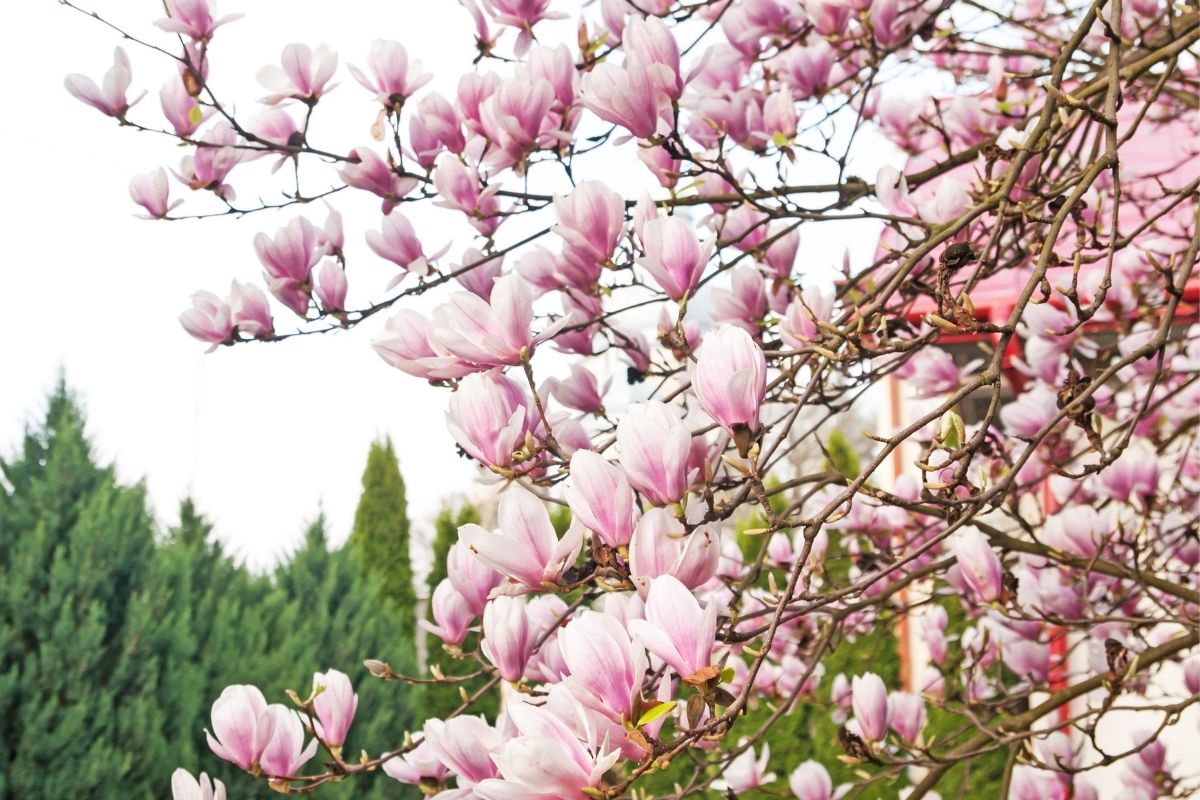
You will want to water them regularly during the winter months, as well as fertilize them once every few weeks during the growing season.
Magnolia trees are fans of acidic soils so if your natural soil is neutral or you have more alkaline soil then you can supplement the area around your magnolia with peat moss or acid fertilizer to make it a more hospitable environment for your magnolia.
You will need to do this periodically to get the best results for your magnolia tree.
With many varieties of magnolia plants available, you can rest assured that there will be a magnolia that will thrive in whatever part of the United States you live in. Magnolias can be contained in large patio pots if you wish, which will help keep the tree small and stop it from spreading too far.
If you plant it in the ground, you should be prepared for a branch spread of between thirty and forty feet for larger species and ensure the land around it is not a heavy footfall area because their shallow roots can be easily damaged.
Try to choose an area where they will get full sun, or at least only partial shade for most of the day because magnolia trees thrive in sunshine.
Eight Stunning Varieties Of Magnolia
Whatever climate you have and wherever you live, you can bet there’ll be a magnolia variety that will love your garden. And in return, they will bless you with big, fragrant flowers every spring.
1. Southern Magnolia (Magnolia Grandiflora)
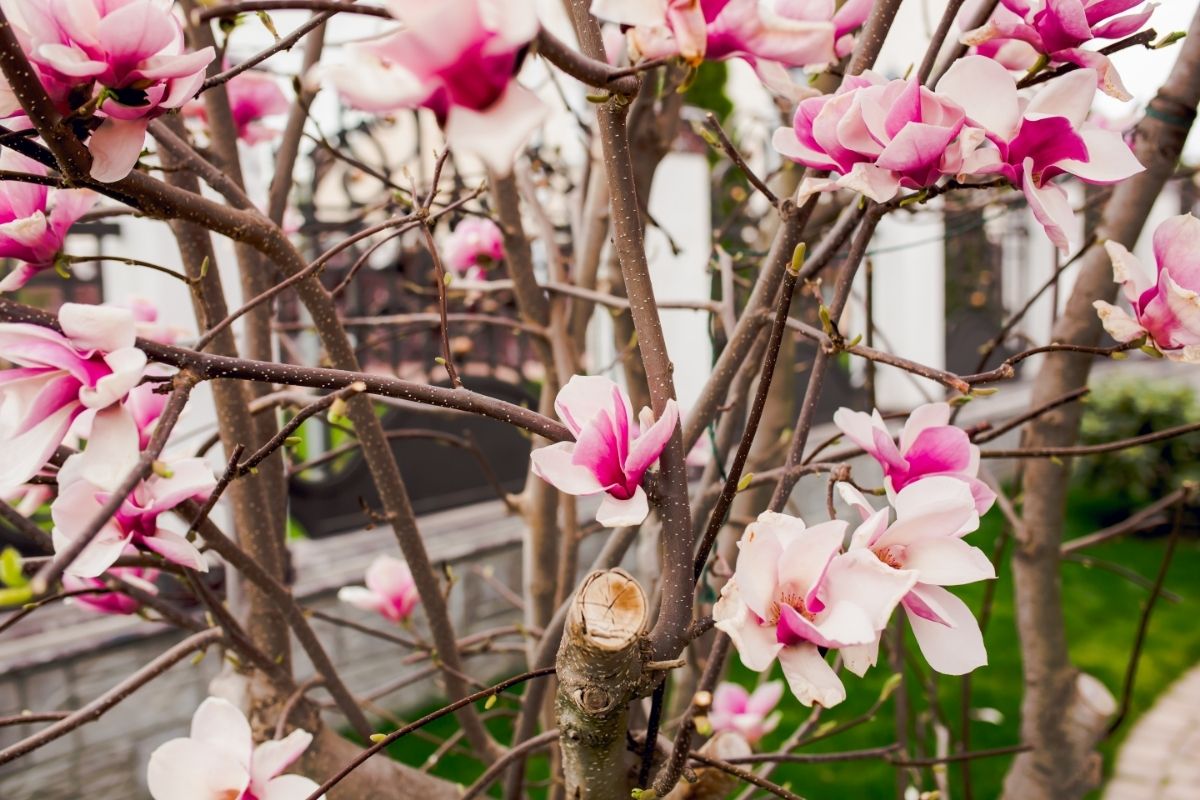
This magnolia variety can grow into a pretty large tree which is known for its glossy green leaves in late spring and has pure white flowers. Southern Magnolia trees can grow up to 80 feet tall and will spread around 40 feet when fully matured so they make excellent shade trees.
Southern Magnolias are an evergreen species so they won’t drop their leaves in the fall. This means you can enjoy those beautiful green leaves all year round and you’ll love the combination of the stunning white blooms with the vivacious green of the leaves in the spring.
Despite being labeled a Southern belle, these trees are fairly hardy and will be happy in zones 6 to 10 as long as they get enough sun and are planted in slightly acidic, well-drained soil.
2. Lily Magnolia (Magnolia Liliiflora)
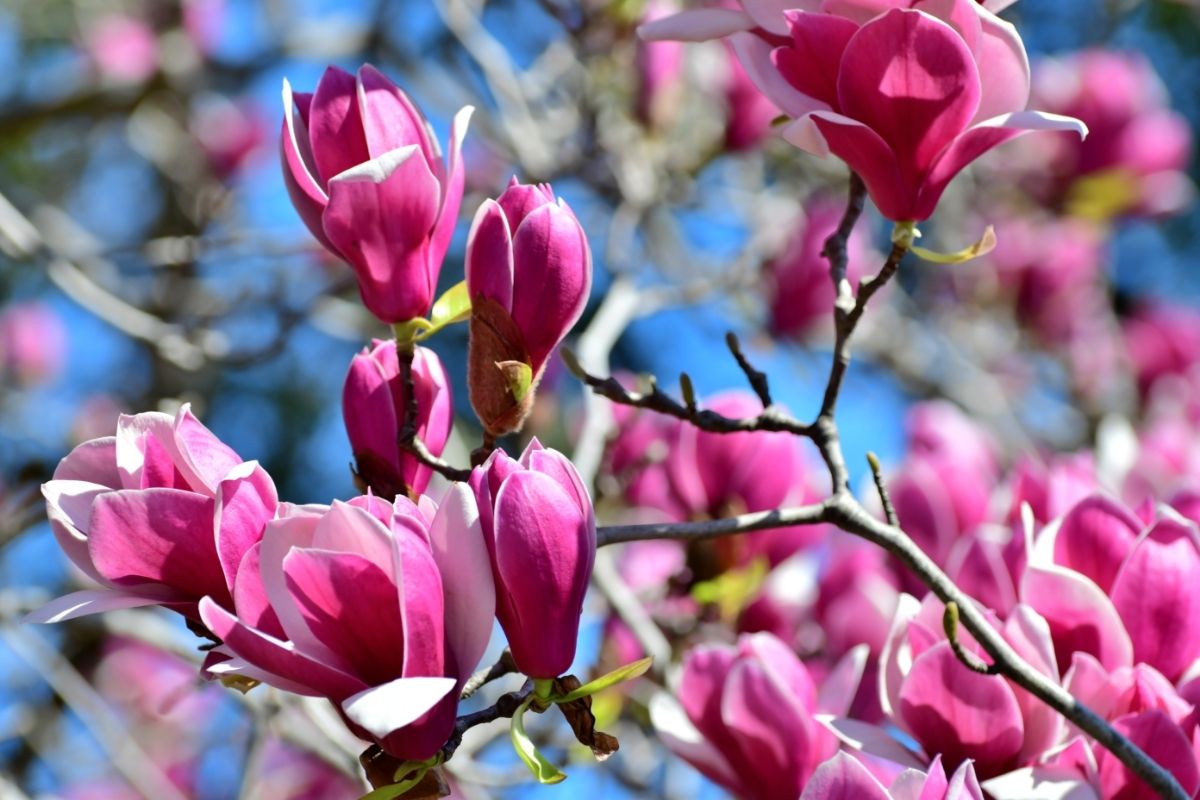
This is a smaller variety of Magnolia trees so it can be grown as a shrub or a small tree. This species is known for its purple or pink colored flowers and the Nigra variety is particularly credited with producing vividly colored petals.
It is a relation to the popular saucer magnolia which is also known for its deeply colored, lily-shaped flowers.
When planted in the ground you can expect this tree to reach heights of around ten to twelve feet so it makes a pleasant street tree as well as a backyard addition. It is deciduous and will thrive best in 7 to 10 growing zones.
RELATED: 10 Different Plants That Start With L (Including Photos)
3. Saucer Magnolia (Magnolia X Soulangiana)
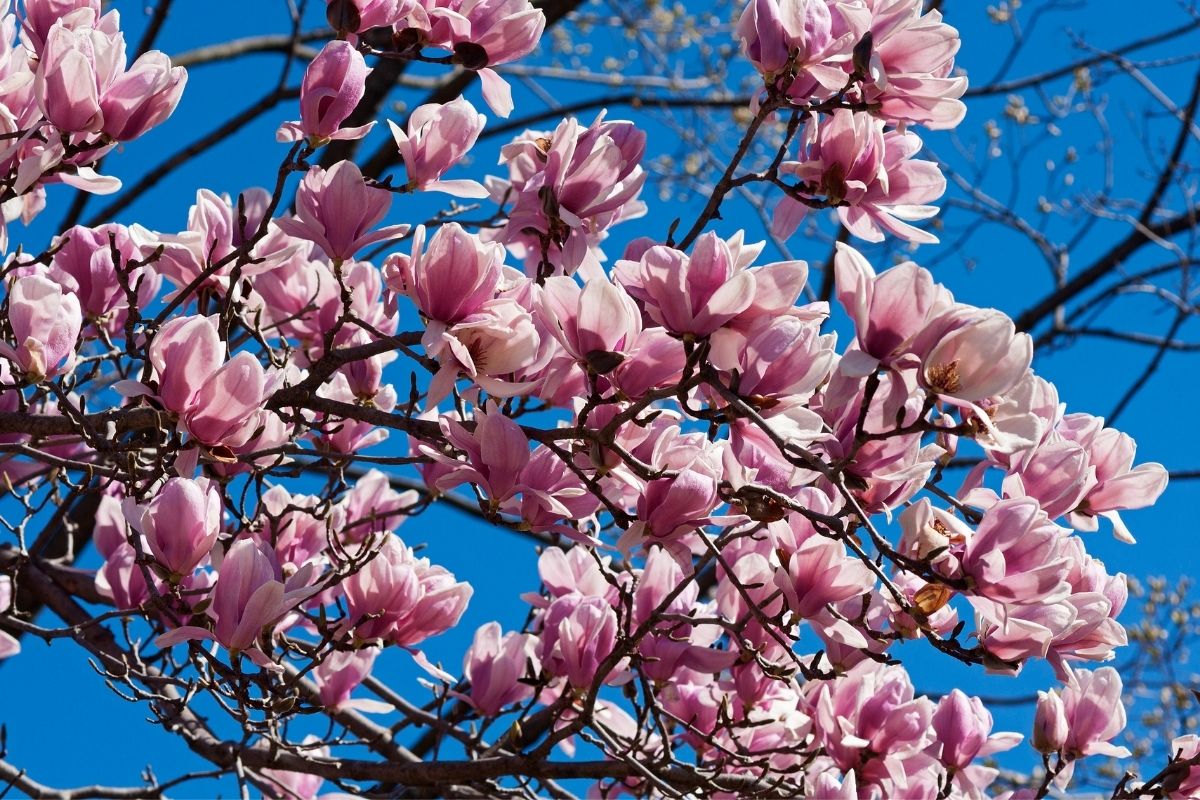
This is one of the most common ornamental magnolias and is known for the gradient pigment of its blossom petals.
The center of the flowers is a pastel purple or deep pink color which slowly fades to white at the tips of the petals. It is suitable as a large shrub if contained or a small tree and there are various varieties available that will produce slightly different colored flowers.
This cultivated species is a cross between the lily magnolia and the Yulan variety and is often called a tulip tree because of the large cup-shaped blossoms it produces. If given free rein to grow, this tree can reach a height of around twenty feet and will be happy in zones 4 through to 9.
4. Star Magnolia (Magnolia Stellata)
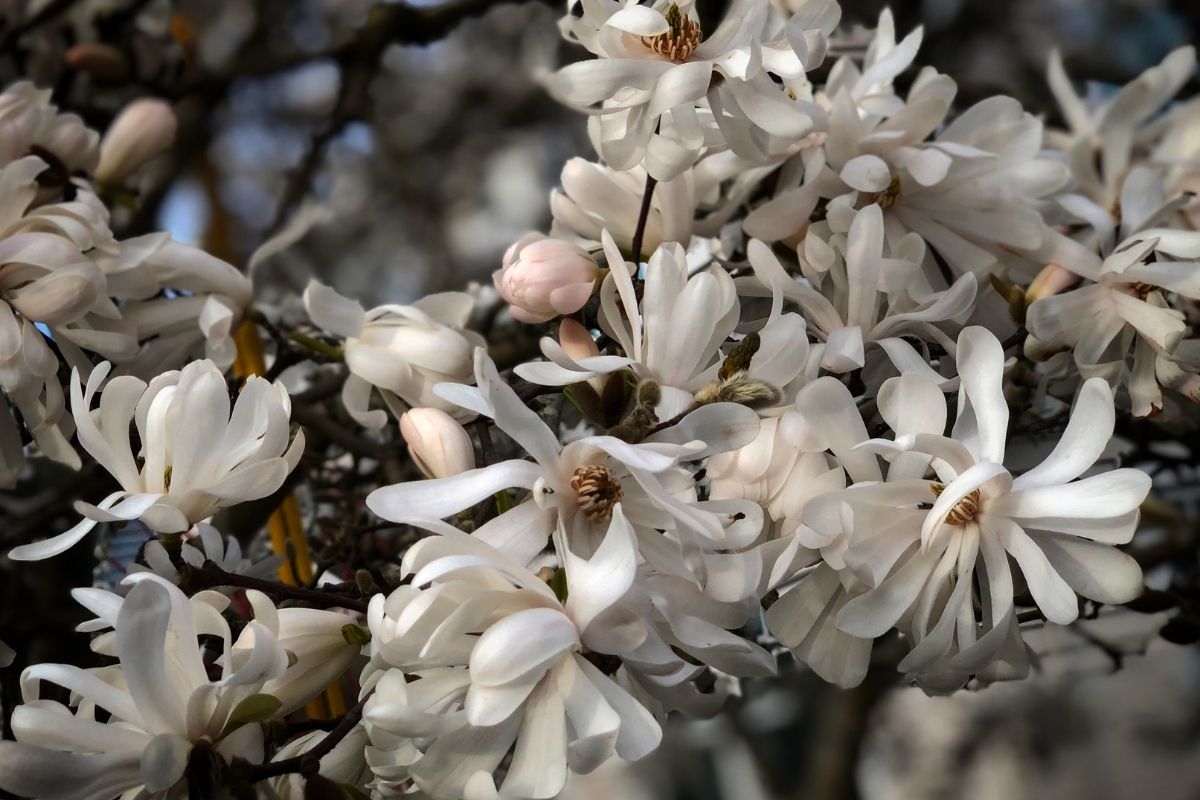
These are a novel variety of deciduous magnolia trees in that they tend to flower in late winter or very early spring, often before the spring bulb plants have bloomed.
The flowers don’t look like most other magnolia blooms in that the petals are narrow and so look more like daisies than tulips. This is presumably where their name comes from, as they look a little like stars.
The blossoms are typically pure white and because of their early appearance, they can be easily damaged by frosts or cold snaps.
For this reason, it’s a good idea to plant them in a sheltered area that gets plenty of sunshine. These little trees will grow up to twenty feet in height and can be grown in zones 4 to 8.
5. Cucumber Tree (Magnolia Acuminata)
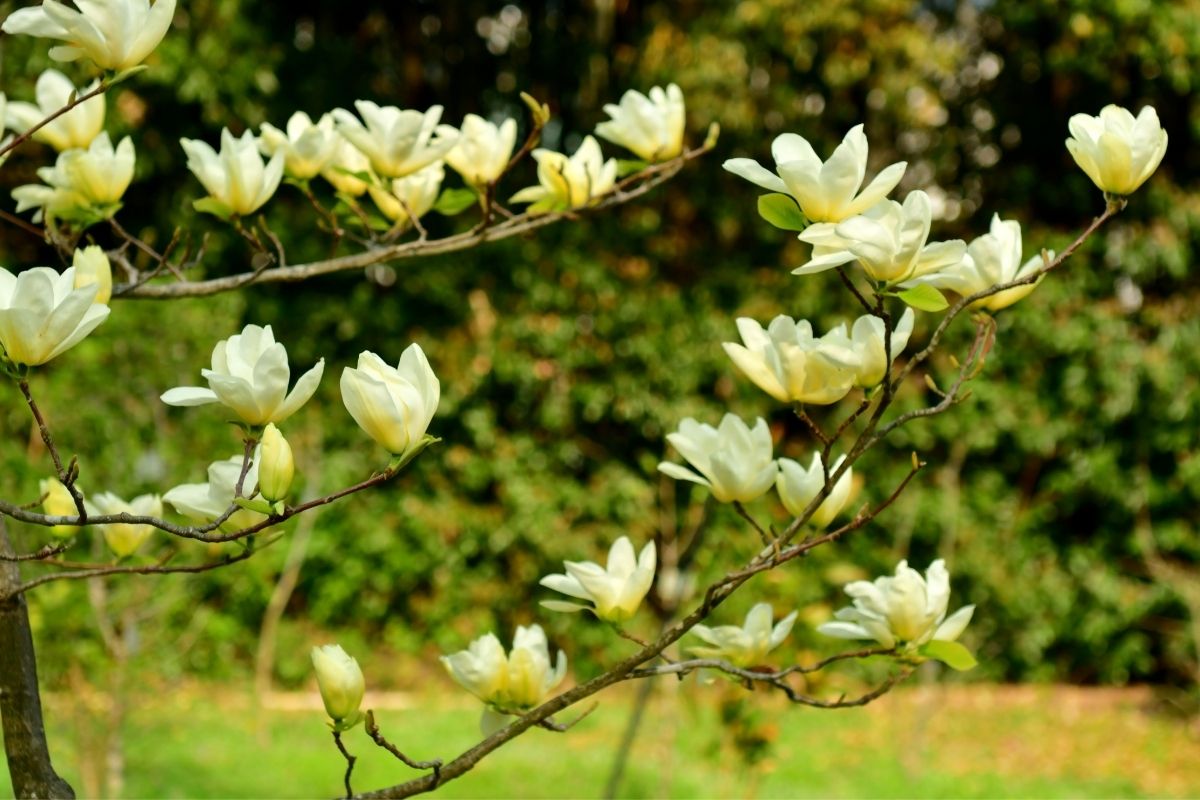
First, let us say that this ornamental tree does not grow cucumbers. Their name comes from the magnolia fruits that look a little like cucumbers.
Despite the unromantic name, this variety is pretty popular, especially in colder climates. The large glossy leaves are attractive to look at and the flowers are sweet too.
The flowers are much smaller than other magnolia varieties measuring about two inches across when in bloom, but they maintain the usual tulip shape of other magnolia varieties.
The flower petals are greenish in the center and then turn to white towards the tips so they aren’t quite as flashy as some other types.
These evergreen trees can get pretty big compared to other types of magnolias so be prepared for them to reach between sixty and eighty feet in height. Cucumber Magnolias are one of the hardiest varieties, so should do well in growing zones 3 to 8.
6. Blue Magnolia (Magnolia Acuminata)
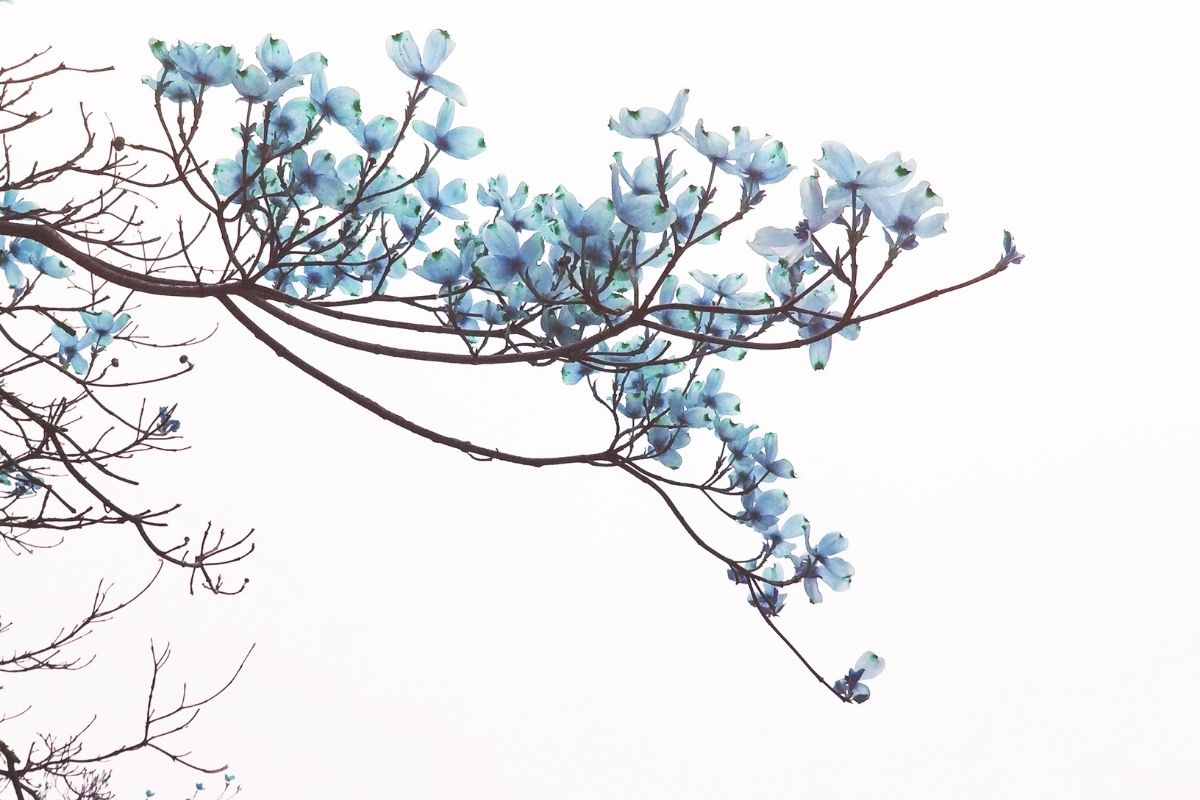
Blue is a very unusual color for a magnolia tree but in fact, it is only the unopened buds that are a dark blue-green in hue. Once the flowers open, the flowers are dark yellow inside with darker green outer petals.
This is another example of a magnolia variety that when pollinated, produces cucumber-shaped fruits so you may also hear this referred to as a cucumber tree. The fruits are decorative though, so don’t go slicing them up to go on a salad.
Blue Magnolias are a deciduous species and fairly hardy so will be happy in growing zones 4 through to 9 and can grow up to about twenty feet tall if allowed to do so.
7. Magnolia Kobus

These are small to medium deciduous magnolia trees. They usually are amongst the earliest of spring bloomers and produce white flowers which are often tinged with a hint of light pink at the base of the petals. The flowers are known for being extremely fragrant and goblet or trumpet-like in shape.
This gentle magnolia will be happiest in zones 5 to 8 and it can be expected to grow up to thirty feet in height.
8. Jane Magnolia (Magnolia Liliflora ‘Reflorescens’ X Stellate)
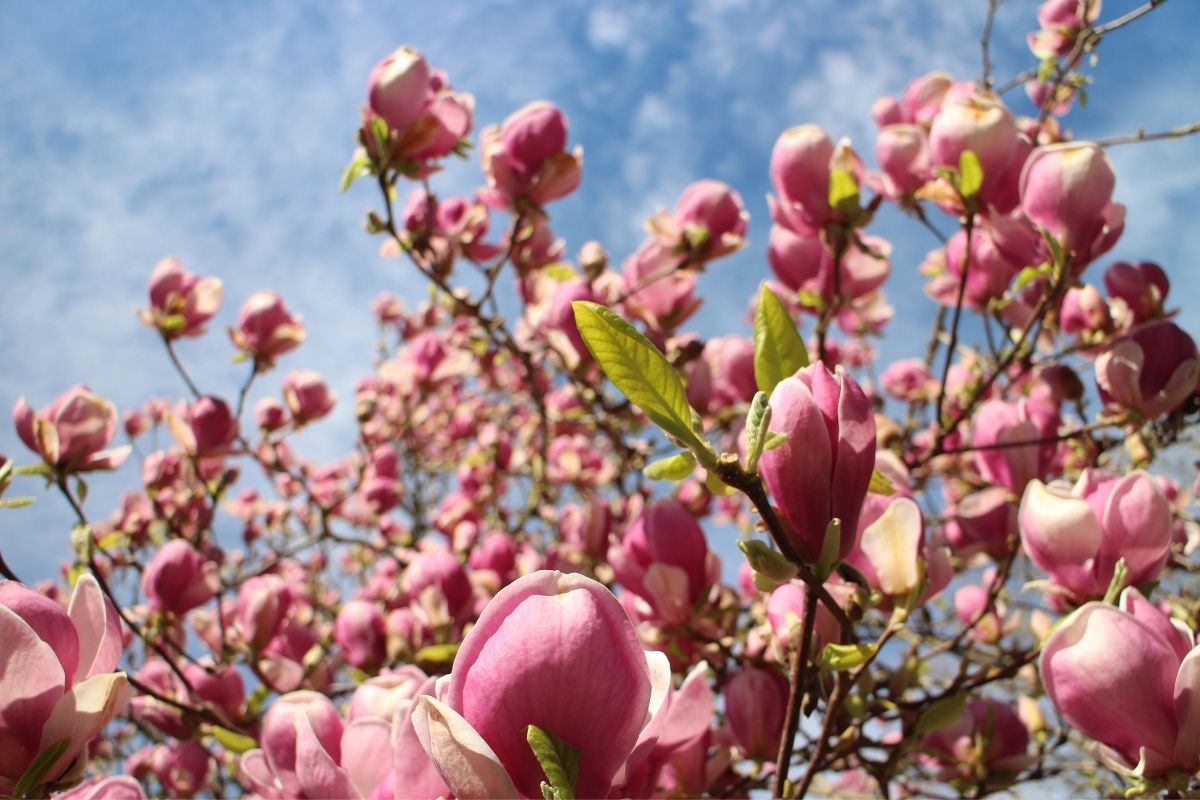
This is a vividly colorful cultivated magnolia. Jane is one of the hybrid “little girl” range of magnolias that have been bred to be small, colorful, and give off a pleasant light scent.
The blooms you get from a Jane Magnolia will be pink or purple in color and are tulip-shaped. This little lady will be happy in growing zones 4 through 7 and can grow to a humble fifteen feet when fully matured.
These make great border plants as well as large potted shrubs and will be the late spring stars of the yard in terms of color and the general wow factor.
For more information on growing magnolias, you can visit Gardening Know How for advice on hardy magnolia trees, or Magnolia Society International for current tips on growing magnolia plants.
Conclusion
If you do decide to add a magnolia or two to your garden, there are a few things to consider. First, you need to know what type of magnolia you want to plant. Do you prefer the look of a large tulip-shaped bloom or a star-shaped blossom on a spring afternoon?
You’ll also need to know how tall they’re likely to grow before planting. Some people love the smell of the magnolia flowers so you’ll want to place it somewhere near where people are likely to be, to make the most of the blooming period.
If you want a splash of early spring color, some magnolias can accommodate, but if you want a colorful addition to your summer border then late-flowering varieties like the Jane Magnolia with huge crops of pink flowers may suit you better.
If you are unsure about your soil type, you should try a smaller species of magnolia in a large pot. This way you can easily control the acidity of the soil without worrying about affecting other plants.
Wherever you end up putting your magnolia, ensure that it will be in full sun or partial shade with access to direct sunlight for at least four hours of the day and that it is in an area of ground that is well-drained, not boggy.
Magnolias are one of the most beautiful ornamental flowering trees in the world, so it’s no wonder they are so widely popular. Their delicate fragrance and soft colors hint at oriental origins but they don’t look out of place in an American garden or at the sides of the roads as decorative street trees.
If you want a beautiful addition to any garden or landscaping project, you couldn’t go wrong with any of the magnolia varieties we have shown you.







